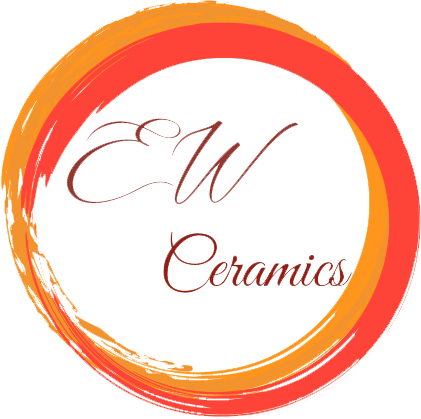Profa. Dra. Elizabeth Batista Pinto Wiese
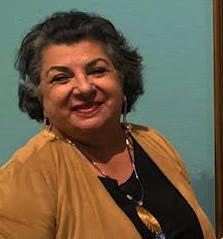
Copyright: Elizabeth Wiese
Museum Modern/Contemporary Art in Antibes
Place Mariejol
06600 Antibes, France
O Museu Picasso Antibes está situado no Castelo Grimaldi, em Antibes, França. O Castelo Grimaldi é um palácio fortificado, construído sobre o local onde havia a antiga Acrópole Grega de Antípolis, e posteriormente um castelo Romano e um Bispado Medieval. Em 1608, o castelo tornou-se numa fortaleza da família Grimaldi, e a partir de 1702 serviu a câmara municipal de Antibes. Em 1925, a municipalidade da Cidade de Antibes adquiriu o castelo, que passou a ser nomeado Museu Grimaldi.
The Picasso Museum Antibes is located in the Grimaldi Castle, in Antibes, France. Grimaldi Castle is a fortified palace, built on the site of the ancient Greek Acropolis of Antípolis, being later a Roman castle and a Medieval Bishopric. In 1608, the castle became a stronghold of the Grimaldi family and from 1702 it served the city council of Antibes. In 1925, the municipality of the City of Antibes acquired the castle, turning it into the Grimaldi Museum.

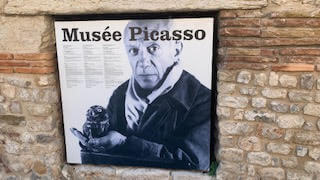
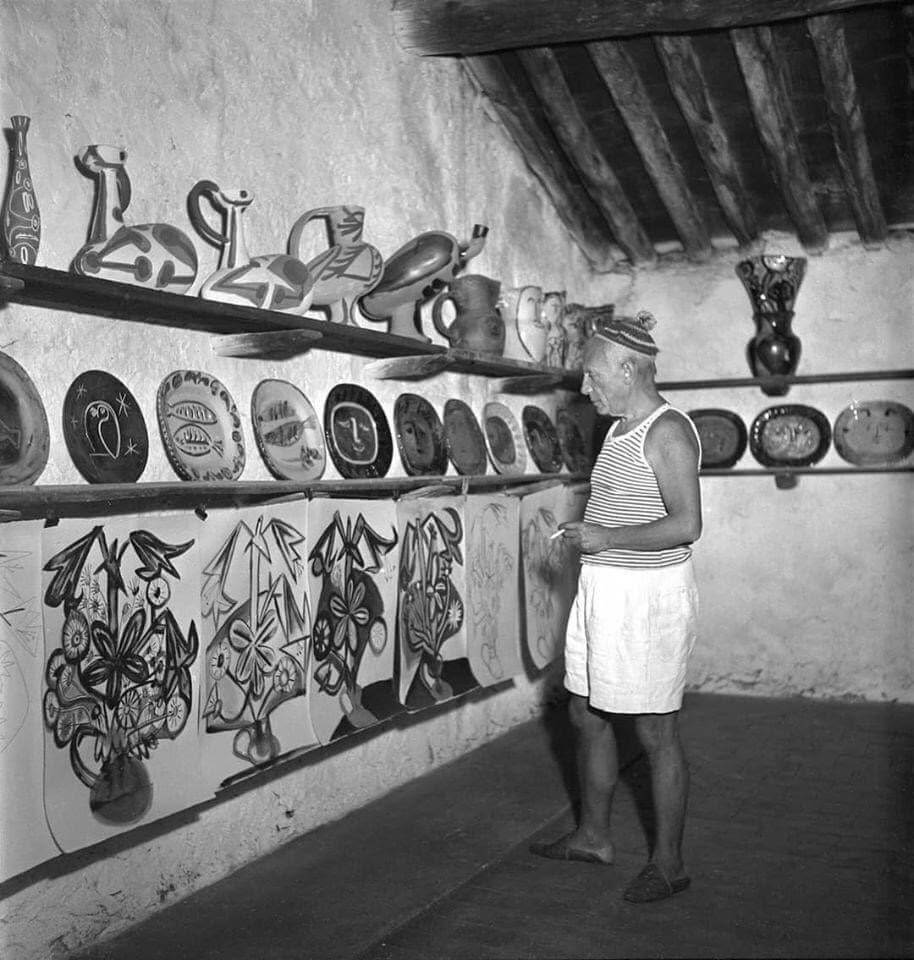
O Castelo Grimaldi, situado em local privilegiado junto ao mar, destaca-se no ambiente com com seus altíssimos muros de pedra, em marcante presença na vista maravilhosa do mar Mediterrâneo.
The Grimaldi Castle, situated in a privileged location by the sea, stands out in the environment with its very high stone walls, making a remarkable presence in the wonderful view of the Mediterranean Sea.

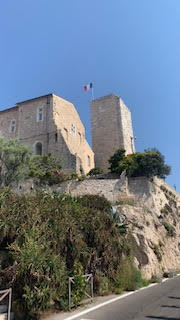
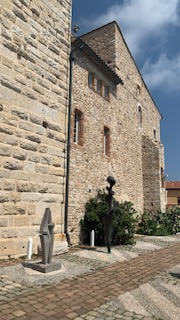
O Castelo Grimaldi foi transformado em Museu Picasso em 1966, tendo sido renovado em 2006-2008, quando foi re-inaugurado muito enriquecido com as obras doadas ao museu por Jacqueline Picasso, em 1991 e que hoje fazem parte da coleção Picasso exposta no Castelo Grimaldi. A coleção de cerâmicas de Picasso exposta atualmente no Museu Picasso Antibes data principalmente dos anos 1946 e 1947.
The Grimaldi Castle was transformed into the Picasso Museum in 1966, having been renovated in 2006-2008, when it was re-inaugurated greatly enriched with works donated to the museum by Jacqueline Picasso in 1991 and which today form part of the Picasso collection on display. The collection of Picasso ceramics currently on display at the Picasso Antibes Museum dates mainly from 1946 and 1947.
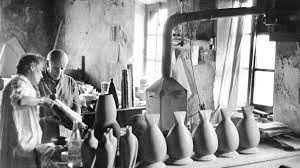
No terraço do Museu Picasso Antibes pode-se observar uma coleção permanente de esculturas remarcáveis de Germaine Richier.
On the terrace of the Picasso Museum Antibes you can see a permanent collection of remarkable sculptures by Germaine Richier.
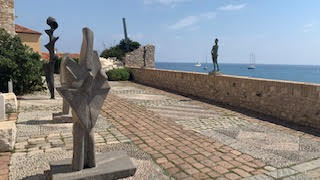

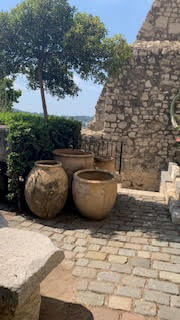
Picasso começou a fazer trabalhos em cerâmica ao final dos anos 1940, principalmente nos verões na Costa Azul do sul da França, inspirado na luz clara e nas cores vivas desta região mediterrânea. Em 1946, ao visitar a Exposição Anual de Cerâmica de Vallauris, ficou impressionado pela qualidade das obras do ateliê Madoura (https://www.art-angelux.com/madoura), e passou a frequentar este ateliê de Suzanne e Georges Ramié, inaugurado em 1938, fazendo contato com outros ceramistas locais em uma cooperação que durou mais de 25 anos.
Picasso began to work in ceramics in the late 1940s, mainly in the summers on the Côte d'Azur in southern France, inspired by the bright light and vivid colours of this Mediterranean region. In 1946, when visiting the Annual Ceramics Exhibition in Vallauris, he was impressed by the quality of the works at the Madoura studio (https://www.art-angelux.com/madoura), starting to work there. That studio, owned by Suzanne and Georges Ramié, was opened since 1938, gave Picasso opportunities to contact other local potters in a cooperation that lasted more than 25 years.

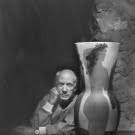
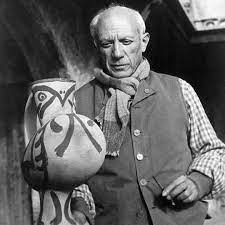
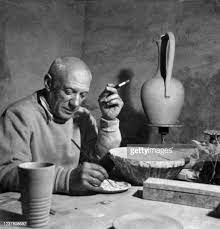
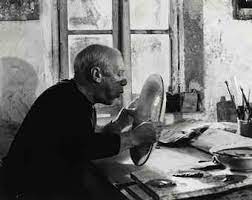
Picasso pintando suas peças cerâmicas no seu ateliê no Castelo Grimaldi.
Picasso painting ceramics in his studio at Grimaldi Castle.
Inicialmente Picasso se dedicou a criar peças utilitárias, como pratos, travessas e tigelas. Um grande numero de travessas de mesmo formato e tamanho foram pintadas por Picasso com desenhos e cores variados, formando uma grande coleção, que se encontra exposta atualmente no museu.
Initially, Picasso dedicated himself to create utilitarian ceramic pieces, such as plates, platters and bowls. A large number of trays of the same shape and size were painted by Picasso with different designs and colours, forming a large collection, which is currently on display at the museum.


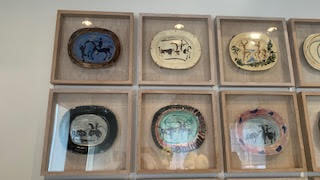
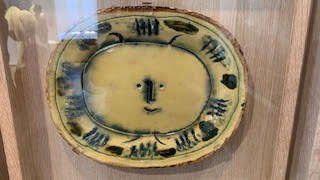
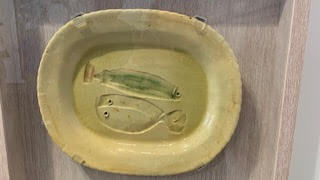






Em uma segunda fase como ceramista Picasso criou formas mais ambiciosas, como jarras e vasos com desenhos anatômicos humanos e animais e figuras mitológicas.
In a second phase as a ceramist, Picasso created more ambitious forms, such as vases and jars with human and animal anatomical drawings and mythological figures.


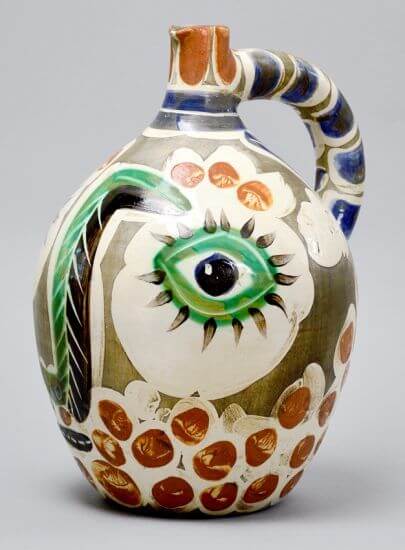
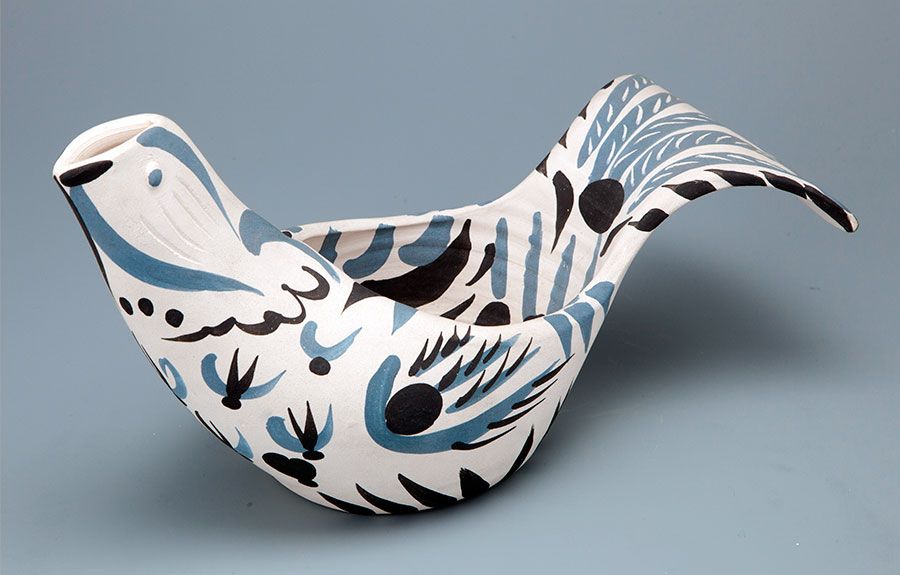

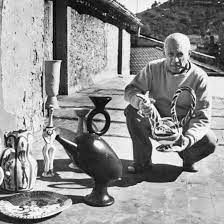
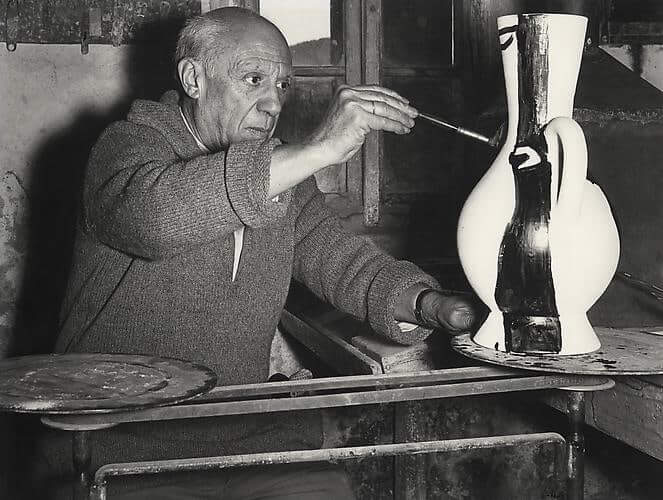
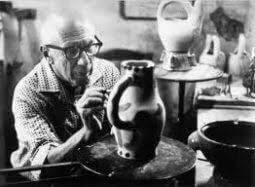
Na fase mais avançada de seus estudos em cerâmica Picasso fez esculturas de grande porte, mantendo seu estilo pessoal de figuras humanas, e animais, frequentemente com influências da mitologia.
In the most advanced phase of his studies in ceramics, Picasso made large sculptures, maintaining his personal style of human and animal figures, often with influences from mythology.


Estas experiências com cerâmica também trouxeram mudanças na vida pessoal do artista, pois ele conheceu no ateliê Madoura a ceramista Jacqueline Roque, que se tornou sua segunda esposa em 1961 (https://www.parkwestgallery.com/history-pablo-picasso-ceramics/).
These experiences with ceramics also brought changes in the artist's personal life, as he met the ceramist Jacqueline Roque at the Madoura studio, who became his second wife in 1961 (https://www.parkwestgallery.com/history-pablo-picasso-ceramics/).
O maravilhoso Museu Picasso Antibes tem o brilho do grande mestre das artes, apresentando as lindíssimas e criativas cerâmicas do artista, que merecem ser vistas e aplaudidas.
Para completar esta aventura veja o interessante video: Picasso at work:
The wonderful Picasso Museum Antibes has the brilliance of the great master of the arts, presenting the artist's beautiful and creative ceramics, which deserve to be seen and applauded. To complete this adventure watch the interesting video: Picasso at work:
Elizabeth Wiese São Paulo, Abril 2023 São Paulo, April 2023
